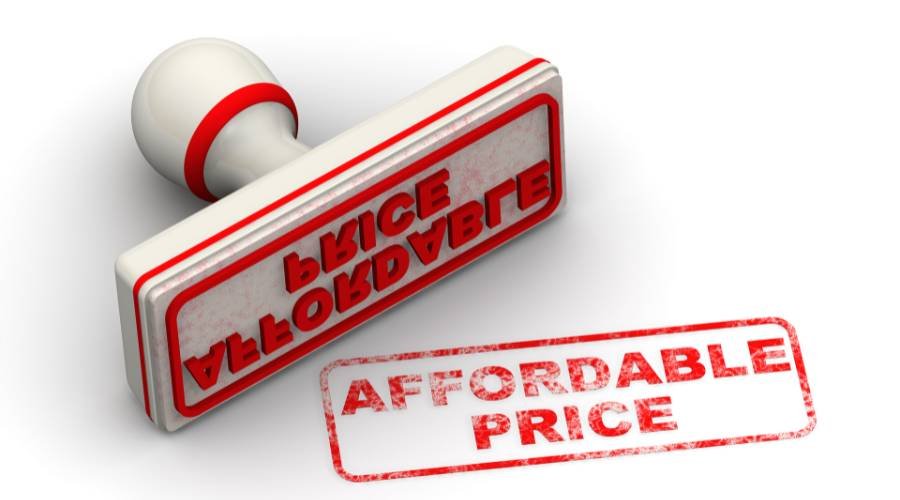As business leaders, we know how vital it is to build strong, engaged communities. But how do we really measure the impact of our work? In today’s world, where being open and responsible is key, we must show more than just what we do. We need to prove the lasting change we make.
Are we just starting, or are we making real, lasting changes? This is what we’ll look into in this article. We’ll discuss how to fully measure and share your business’s community impact.
Key Takeaways
- Understand the importance of quantifying your business’s social, economic, and environmental impact on the local community.
- Learn how to align your impact goals with your overall business objectives for maximum effectiveness.
- Discover the different types of metrics (input, output, outcome, and impact) and how to choose the ones that best tell your community’s story.
- Explore strategies for collecting both qualitative and quantitative data to paint a holistic picture of your impact.
- Gain insights into how to analyze your impact data to uncover meaningful insights and drive continuous improvement.
Defining Your Impact Goals
Businesses aim to make a difference in their communities. The first step is to set clear social impact goals. This means figuring out the problems you want to solve and who you want to help.
By linking your impact goals with your business objectives, you make sure your efforts are focused and lasting.
Business Community Impact: Identifying the Problem and Target Audience
Start with a detailed community needs assessment. Find out what issues your community faces, like poverty or environmental problems. Then, decide who you can best help, like underprivileged groups or those with special needs.
Aligning Impact Goals with Business Objectives
After knowing the problem and who you can help, set your impact goals. Make sure they are specific, measurable, achievable, relevant, and time-bound (SMART). Your goals should match your business’s strengths and plans.
| Example SMART Impact Goal | Alignment with Business Objectives |
|---|---|
| By 2025, reduce greenhouse gas emissions by 50% compared to 2020 levels in line with the Paris Agreement and SDG 13 on climate action. | Supports the company’s commitment to sustainability and environmental responsibility, which aligns with its long-term business strategy and brand positioning. |
Setting impact goals is key to measuring your business’s community impact. Aligning your goals with your target audience’s needs and your business’s objectives lays a strong foundation for measuring and reporting your impact.
Choosing Relevant Impact Metrics
When we set our impact goals, picking the right metrics is key. These metrics help us measure how well we’re doing and the lasting effects of our work. They cover things like resources used, immediate results, changes made, and long-term impacts.
Input, Output, Outcome, and Impact Metrics
To track our progress well, we must know about different metrics. Input metrics show the resources we use, like time, money, or people. Output metrics show what we achieve right away, like how many programs we run or how many people we reach. Outcome metrics look at the changes we make for others, like better health or more knowledge. Lastly, impact metrics measure how our work affects the community or environment over time.
Using Frameworks for Mapping Metrics
Tools like the Theory of Change and Logic Model help us connect these metrics. They guide us in collecting the right data to measure our impact. These tools help us plan our outcomes, identify what we need to do, and track our progress.
| Metric Type | Example | Purpose |
|---|---|---|
| Input Metrics | Funding, volunteer hours, staff time | Measure the resources invested in our initiatives |
| Output Metrics | Number of programs delivered, people reached, resources distributed | Track the immediate results of our efforts |
| Outcome Metrics | Changes in knowledge, skills, attitudes, or behaviors of our target audience | Assess the changes we create for our stakeholders |
| Impact Metrics | Improvements in community well-being, environmental sustainability, or systemic change | Measure the long-term, sustained effects of our work |
By using frameworks and best practices, we make sure our data is focused and shows our work’s value. This helps us show our impact to stakeholders and funders.
Collecting Qualitative and Quantitative Impact Data
Businesses aim to measure their community impact by collecting both types of data. Qualitative data, like surveys and interviews, offers deep insights into stakeholders’ experiences. Quantitative data, from analytics, provides clear metrics on your initiatives’ success.
Surveys, Interviews, and Observations
Surveys help gather feedback and satisfaction ratings from users. They reveal their needs and views on your impact efforts. Interviews offer a closer look at stakeholders’ stories and experiences, highlighting the details of your impact.
Observations let you see how users interact with your offerings. By recording these moments, you gain insights that might be overlooked otherwise.
Analytics and Data Collection Tools
Analytics and data tools give you quantitative data on your initiatives’ performance. Platforms like Google Analytics, and Mixpanel track website traffic and user behavior. This helps measure your impact.
Tools like Google Forms, Typeform, and are great for surveys. Video platforms like Zoom and Loom make virtual interviews and observations easy.
By using both qualitative and quantitative data, businesses get a full picture of their impact. This helps them make better decisions and improve continuously.
Analyzing Impact Data for Insights
We start by collecting data from our business community initiatives. Then, we dive into finding valuable insights that can lead to real change. Data analysis is key to unlocking this information and turning it into strategies we can act on.
Descriptive, Inferential, Predictive, and Prescriptive Analysis
We use different techniques to understand our impact fully. Descriptive analytics helps us summarize data in charts and tables. This lets us spot patterns and trends quickly.
Inferential analytics let us test our ideas about the community’s needs and how well we meet them. Predictive analytics help us guess what will happen next and how our efforts might impact the future. Prescriptive analytics suggest actions to improve our community work and make a bigger difference.
Data Analysis Tools and Techniques
We use many tools and techniques for our data analysis. From Excel and Google Sheets to Tableau and Power BI, we turn raw data into insights. R and Python are also key for advanced data analysis and predictive modeling.
| Metric | Description | Insights Gained |
|---|---|---|
| Percentage of active community members who contribute versus total membership | Measures the level of active engagement and participation within the community | Identifies the proportion of members who are actively contributing and helps assess the overall health and vitality of the community |
| Number and type of engagements per community member | Tracks the frequency and nature of interactions among community members | Provides insights into the level of engagement and the types of activities that resonate most with the community |
| Response rate percentage on community posts | Measures the responsiveness and level of interaction within the community | Indicates the community’s level of engagement and the effectiveness of the content and discussions being facilitated |
| Median response time to community member queries | Tracks the timeliness of responses to community member inquiries and requests | Helps assess the responsiveness and quality of support provided to the community, identifying areas for improvement |
By using a variety of data analysis tools and techniques, we get a full picture of our community’s impact. This helps us make better decisions and keep improving our work.
Engaging Local Stakeholders and Community
Building strong ties with local stakeholders and the community is key. It shows your business’s real-world impact. Working with residents, businesses, and civic leaders gives you insights. This ensures your efforts meet the community’s needs and dreams.
Collaborative Approaches and Feedback Mechanisms
Using feedback loops like surveys and interviews lets the community shape your efforts. This teamwork builds trust and gives you data to make your programs better.
- Involve property owners from the start for a smoother process
- Work with local government and economic groups for advice and funds
- Team up with community groups to promote your project’s benefits
- Use various tools like meetings, newsletters, and social media for engagement
Building Trust and Support Through Transparency
Transparency is key for businesses wanting to positively impact. Sharing your impact measurement openly shows your dedication. This builds trust. Regular updates keep everyone informed and involved.
“Early and frequent engagement with stakeholders can shape public perception and project success.”
Working with local groups expands your reach and builds community spirit. Getting stakeholders involved in planning avoids conflicts and boosts your project’s success.
Measuring and Showcasing Environmental and Social Outcomes
At the heart of sustainable business practices is measuring and showing our environmental and social impact. By quantifying our ecological footprint and community contributions, we paint a full picture of our impact. This shows our commitment to sustainability and social responsibility.
Life cycle assessment is a key tool for us. It lets us analyze our environmental impact from start to end. This helps us find ways to improve, use resources better, and cut down on waste.
We also collect data from the community through surveys and interviews. This data gives us insights into our social impact. It shows us about job creation, community engagement, and the well-being of those we serve.
By tracking metrics like resource usage and carbon footprint, we can show our environmental impact and social impact. This detailed reporting shows our commitment to sustainability. It also strengthens our relationships with stakeholders, increases transparency, and shows we are a responsible corporate citizen.
| Metric | Impact | Value |
|---|---|---|
| Water Usage Reduction | Environmental | 25% |
| Community Engagement | Social | 75% Participation |
| Literacy Milestones Achieved | Social | 35% Increase |
| Employment or Business Creation | Social | 76% Success Rate |
By using life cycle assessment and community data, we can measure and show our environmental impact and social impact. This strengthens our commitment to sustainability and being a responsible corporate citizen.
Case Studies: Successful Examples of Business Community Impact
Looking at real-world examples can teach us a lot. These examples show how businesses have made a difference in their communities. By studying their successes and challenges, we can learn how to make a bigger impact.
Quantitative and Qualitative Impact Showcases
Some case studies focus on numbers, while others look at the people side of things. For example, a Cone Communications survey found that 94% of Gen Z believe companies should tackle big social issues. A DoSomething Strategic survey showed that 76% of Gen Z would buy from a brand that supports causes they care about.
Adidas’ BOKS by Reebok program is a great example. It helped students do better in school and run faster. A-LIGN also made a big difference, donating almost $6,000 and volunteering over 1,000 hours in 2020.
Lessons Learned from Real-World Examples
Looking at what worked and what didn’t for other businesses can teach us a lot. Ben & Jerry’s, for example, supports criminal justice reform. Burlington Stores collected over 2.3 million coats for those in need.
These examples show the value of setting clear goals and choosing the right metrics. They also highlight the importance of working with the community. By learning from these examples, we can improve our own efforts to make a difference.
Strategies for Continuous Improvement of Business Community Impact
Improving your business’s community impact is a journey that never ends. It’s about always listening to community feedback and using data-driven decision-making. This way, you can keep your efforts fresh and meet the changing needs of your community. This continuous improvement helps your business make a bigger difference and build stronger ties with the people it helps.
First, create a strong impact measurement framework that tracks both numbers and stories. This framework will give you insights into how well your programs work. It lets you spot where you can get better and make choices based on facts. Also, talk often with your community, employees, and partners to hear their thoughts and see what they need.
- Always check and update your impact goals to match the current situation and what your community needs.
- Look into new ways to collect data and use the latest tech to get better insights.
- Work together with your community to come up with solutions. This way, everyone feels part of the effort and responsible for it.
- Keep looking at your impact data to find trends and new challenges. Use this info to shape your plans and decisions.
- Share your success stories openly to build trust and get more people involved in your work.
By always striving to get better, your business can keep making a real difference in your community. It will stay relevant and meet the needs of the people and places you help.
Conclusion
Measuring and showing our business’s community impact is a big job. It needs a smart plan and data to guide us. By setting clear goals and picking the right metrics, we can understand how our actions help others.
This knowledge helps us work better with our community. It also lets us keep getting better at making a positive difference.
Talking openly with our community is key. It helps us build trust and work together. It shows we care deeply about doing good.
We will keep using data to make our efforts better. We will also keep building strong ties with our community. This way, we make sure our business is a force for good.
By showing our community impact, we inspire others to do the same. Together, we can make a big difference. We can create a world where businesses and communities grow together, making life better for everyone.
FAQ
What is the importance of measuring and showcasing a business’s community impact?
It’s key to build trust and connect with the local community. It shows you care about making a difference. This helps your business be seen as a positive force in the community.
How can a business define its impact goals?
First, identify the problem you want to solve. Know who you’re helping and what you want to achieve. Make sure your goals match your business’s aims for a lasting impact.
What types of impact metrics should a business consider?
Look at input, output, outcome, and impact metrics. Use tools like the Theory of Change to map these out. This helps you understand your impact fully.
How can a business collect qualitative and quantitative data to measure its community impact?
Use surveys, interviews, observations, and analytics. Surveys and interviews get feedback and stories. Analytics track how people use your products or services.
What are the benefits of engaging local stakeholders and the community in the impact measurement process?
Working with the community gives you valuable insights. It ensures your efforts meet their needs. Being open about your process builds trust and strengthens your relationships.
How can a business measure and showcase its environmental and social outcomes?
Use life cycle assessments for environmental impact. Community data helps with social impact. Track metrics like resource use and job creation to show your full impact.
What can businesses learn from successful examples of community impact measurement and communication?
Study businesses that have made a difference. Learn from their successes and challenges. This helps you improve your own impact efforts.
How can businesses continuously improve their approach to measuring and showcasing community impact?
Always seek feedback and analyze your data. Use what you learn to refine your strategies. This keeps your efforts effective and relevant to the community’s needs.






